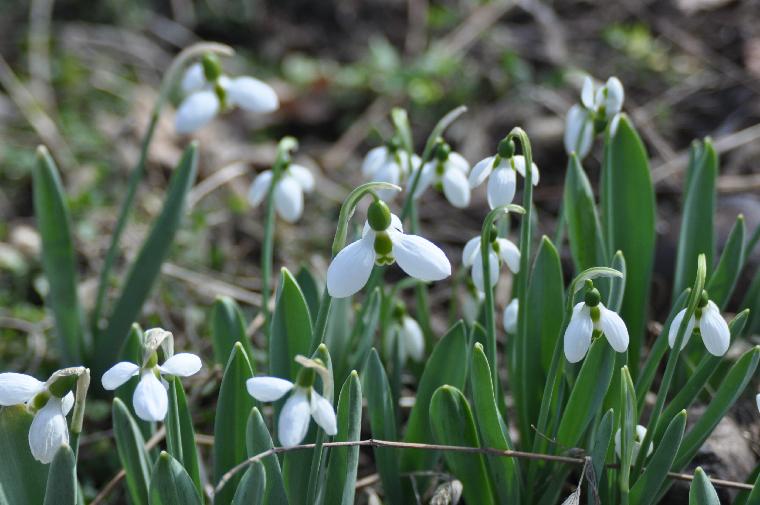What's Blooming in the Greenhouse
In the warm greenhouse (No. 1), there is a pot of bright yellow Cyrtanthus in bloom. These look like Cyrtanthus mackenii cooperi, except they bloom much more freely and the yellow color is more vivid. Stan Tyson gave the pot to me several years ago, and the fading tag seems to say 'Yellow Gloria' if I am reading it correctly.

Cyrtanthus mackenii 'Yellow Gloria' (?)
John Ingram mentioned in Facebook that he had several colorful types of Cyrtanthus mackenii hybrids from Greg Pettit in South Africa. They were apparently developed as potential cut flowers, a big item in South Africa; but John says they are too short-lived to make useful cut flowers. The one I have makes a very nice pot plant.
Numerous Lachenalia species and hybrids are blooming in the cool greenhouse (No. 2), and the Scadoxus puniceus are starting to send up their blooms. I always look forward to the Scadoxus puniceus blooming, as their inflorescences are large and vividly colored. And nothing else is really in bloom in my greenhouses as this time of year. They are a treat to grow. The Lachenalia tend to get very leggy, but not strictly "etiolated," probably because of the weak winter sun at these latitudes (40°N). I try to keep the temperatures in greenhouse No. 2 at about 45°F in winter, but that does not compensate for the poor sunlight.
In the big greenhouse (No. 4) a couple of Clivia are blooming. One is a nice almost-yellow interspecific, my No. 1686, from seed from James and Connie Abel. This was planted in 2003, and this is not the first time it has bloomed; it just looks much nicer this year!

Interspecific Clivia Hybrid #1686 from the Abels
To the eye, #1686 looks more intensely yellow, and there is less pink color to it. My camera is under-sensitive to yellow (or overly sensitive to blue perhaps?) in my opinion.
What's Blooming Outdoors
Very little is happening outdoors so far, except that Galanthus elwesii is blooming a few weeks earlier than usual. Galanthus nivalis is in bud, with white color showing, and many of the daffodils (Narcissus cultivars) are coming up. There are no blooms showing color yet on the daffs.

Galanthus elwesii #1913
One other Galanthus is in bloom now, G. nivalis atkisii, which looks like elwesii at first glance. The leaves are distinctly nivalis-like in atkisii.
Weather (continued)
I've seen more articles on this peculiarly mild winter weather that attribute it to the combination of La Niña and the North Atlantic Oscillation (NAO). I certainly can't remember a winter as mild as this one has been! I anticipate that there will be swarms of noxious little bugs to deal with once warm weather arrives in earnest. Cold winters kill off lots of the bugs, and this has not been a cold winter. Ergo, many more bugs await us! Be prepared.
I have not noticed any articles directly linking climate change/global warming with this unusual combination of abnormal Arctic Osciallation (AO), La Niña, and the North Atlantic Oscillation (NAO). Still, the linkage certainly suggests itself. By the way, the AO has been keeping the cold arctic weather confined in the Far North, which may explain why Alaska has been having unusual problems with heavy snows and sea ice leading to isolation of towns like Nome.
It looks as if many places in the U.S.A. are going to see unusually early bloom on spring flowers this year. This always increases the risks to flowers and trees that they will be caught by a late freeze. So watch for this, since perfectly hardy plants newly emerged from dormancy and in active growth can be very sensitive to a hard freeze.
You have to be a "Friend" to see my stuff in Facebook (http://www.facebook.com/ShieldsGardens). If you try to "Friend" me, be sure to drop me a note explaining who you are! If I don't recognize your name, I'll ignore the request. Don't count on my memory, because it does not work all that reliably anymore.
Good gardening, from here in central Indiana
Jim
<shieldsgardens@gmail.com>
Look up technical terms in the Glossary of Plant Biology